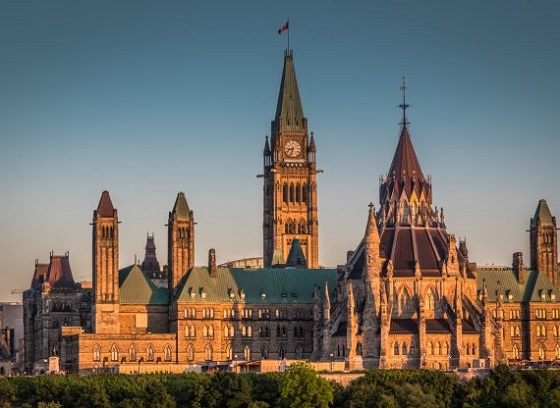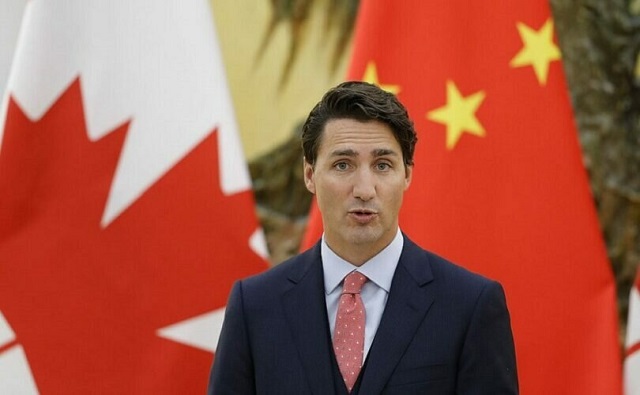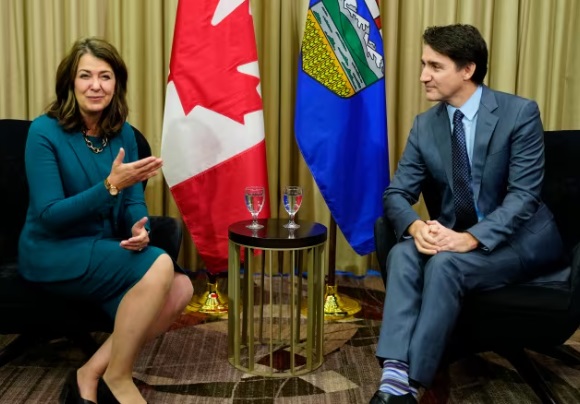Alberta
Province shares plan for school relaunch

From the Province of Alberta
Students returning to school for 2020-21 school yearStudents will return to learning in classrooms across Alberta at the beginning of the new school year. Schools will be ready to welcome students under scenario 1, which is near-normal daily operations with health measures. Alberta’s government has developed a re-entry tool kit to prepare parents and students for what to expect in the new school year. The tool kit includes videos for students explaining some of the health measures, a guide for parents, frequently asked questions, school posters, a self-screening questionnaire in multiple languages, and links to health guidelines.
Under scenario 1, schools will implement a number of public health measures, which include frequent cleaning of surfaces, placing hand sanitizers at school entrances and classrooms, grouping students in cohorts, and planning the school day to allow for physical distancing, which could include staggering start times for classes, recesses and lunches. Additional public health measures may be established prior to September on the advice of the chief medical officer of health in consultation with the education system. In addition, students, staff, parents and school visitors will be expected to use a self-screening questionnaire daily to determine whether they can enter the school.
Successful transition to summer school and child careAlberta’s school re-entry plan works, and already has mitigated risks to students and teachers. Throughout the summer, the Calgary Catholic Separate School Division ran in-person summer school programming in accordance to the guidelines developed and issued by the province. These comprehensive guidelines have mitigated risk, resulting in no COVID-19 outbreaks among teachers or students participating in summer school. Additionally, Alberta has seen a successful reopening of child care centres across the province. Children and staff have safely returned to these centres with no outbreaks occurring. School authority fundingSchool authorities have returned to full funding levels as of July 1, and every school authority in Alberta is receiving a funding increase for the 2020-21 school year – roughly $120 million across the province. A list of funding for every school authority is available here. In addition, the Minister of Education has approved the use of school board reserves, if needed, to help cover local COVID-19-related costs. The total amount of money sitting in school board reserves is $363 million. Accelerated capital school fundingThe province has also provided school boards an additional $250 million to support accelerated capital maintenance and renewal projects, as part of the more than $10 billion infrastructure spending announced in the Alberta Recovery Plan. This funding supports infrastructure enhancements that will help in a COVID-19 learning environment. Seventy-nine school projects totalling $15 million are moving forward with this primary purpose, including upgrades for enhanced hygiene such as hands-free sinks, automatic flush toilets, touchless soap and paper towel dispensers, automatic doors and water bottle filling stations to replace water fountains. New online Student Learning HubA new Student Learning Hub on new.learnalberta.ca is available for parents, students, and teachers to more easily access educational materials to support development of student literacy and numeracy, and provide health and wellness information. The online hub is another resource to support Alberta’s school re-entry plan, with recognition that more online learning resources may be needed during the upcoming school year. Additional resources will also be added throughout the school year. Expanding diploma examsDiploma exams will be offered in every subject in the November and April exam sessions. Expanding the offerings of the diploma exams will support school authorities who are shifting high school programming to a four-semester system as part of their COVID-19 re-entry plan. This shift allows for better cohorting by limiting the number of classes a student is in during a term without affecting total learning time over the course of a year. Personal protective equipmentStudents and staff may wear a mask if they choose to. However, practices such as physical distancing, cohorting, frequent handwashing, staying home when sick and increased cleaning of surfaces will continue to be the priority public health measures. COVID-19 cases at schoolIf a student or staff tests positive for COVID-19, a public health team will investigate to determine when symptoms developed and support the school to minimize transmission. While each case will be addressed based on its unique circumstances, it is anticipated that in most cases only the group of students and staff who came in close contact will likely be required to stay home for 14 days, and not the entire school population. Parents will be notified if a case of COVID-19 is confirmed at school and public health officials will contact those who were in close contact with that person. Transitioning to scenario 2 or scenario 3If there is an outbreak of COVID-19 in a community or school, health officials will work with Alberta Education and impacted school authorities to make any decision to potentially transition to partial in-class learning or at-home learning. Decisions will be based on multiple factors including the number of cases in a community or school and the risk of ongoing transmission. The health guidance for scenario 2 has been updated to allow for a maximum of 20 students per class. |
Alberta
Coutts Three verdict: A warning to protestors who act as liaison with police

From the Frontier Centre for Public Policy
By Ray McGinnis
During the trial numbers of RCMP officers conceded that the Coutts Three were helpful in their interactions with the law. As well, there didn’t seem to be any truth to the suggestion that Van Huigenbos, Van Herk and Janzen were leaders of the protest.
Twelve jurors have found the Coutts Three guilty of mischief over $5,000 at a courthouse in Lethbridge, Alberta. Marco Van Huigenbois, Alex Van Herk and George Janzen will appear again in court on July 22 for sentencing.
Van Huigenbois, Van Herk and Janzen were each protesting at the Coutts Blockade in 2022. A blockade of Alberta Highway 4 began on January 29, 2022, blocking traffic, on and off, on Alberta Highway 4 near the Coutts-Sweetgrass Canada-USA border crossing. The protests were in support of the Freedom Convoy protests in Ottawa.
Protests began due to the vaccine mandates for truckers entering Canada, and lockdowns that bankrupted 120,000 small businesses. Government edicts were purportedly for “public health” to stop the spread of the C-19 virus. Yet the CDC’s Dr. Rachel Wallensky admitted on CNN in August 2021 the vaccine did not prevent infection or stop transmission.
By February 2022, a US court forced Pfizer to release its “Cumulative Analysis of Post-Authorization Adverse Event Reports” revealing the company knew by the end of February, 2021, that 1,223 people had a “case outcome” of “fatal” as a result of taking the companies’ vaccine.
On the day of February 14, 2022, the three men spoke to Coutts protesters after a cache of weapons had been displayed by the RCMP. These were in connection with the arrest of the Coutts Four. Van Huigenbos and others persuaded the protesters to leave Coutts, which they did by February 15, 2022.
During the trial numbers of RCMP officers conceded that the Coutts Three were helpful in their interactions with the law. As well, there didn’t seem to be any truth to the suggestion that Van Huigenbos, Van Herk and Janzen were leaders of the protest.
RCMP officer Greg Tulloch testified that there were a number of “factions” within the larger protest group. These factions had strong disagreements about how to proceed with the protest. The Crown contended the Coutts Three were the leaders of the protest.
During his testimony, Tulloch recalled how Van Huigenbos and Janzen assisted him in getting past the “vehicle blockade to enter Coutts at a time during the protest when access to Coutts from the north via the AB-4 highway was blocked.” Tulloch also testified that Janzen and Van Huigenbos helped with handling RCMP negotiations with the protesters. Tulloch gave credit to these two “being able to help move vehicles at times to open lanes on the AB-4 highway to facilitate the flow of traffic in both directions.”
During cross examination by George Janzen’s lawyer, Alan Honner, Tulloch stated that he noticed two of the defendants assisting RCMP with reopening the highway in both directions. Honner said in summary, “[Marco Van Huigenbos and George Janzen] didn’t close the road, they opened it.”
Mark Wielgosz, an RCMP officer for over twenty years, worked as a liaison between law enforcement and protesters at the Coutts blockade. Taking the stand, he concurred that there was sharp disagreement among the Coutts protesters and the path forward with their demonstration. Rebel News video clips “submitted by both the Crown and defence teams captured these disagreements as demonstrators congregated in the Smuggler’s Saloon, a location where many of the protesters met to discuss and debate their demonstration.” Wielgosz made several attempts to name the leaders of the protest in his role as a RCMP liaison with the protesters, but was unsuccessful.”
However, the Crown maintained that the protest unlawfully obstructed people’s access to property on Highway 4.
Canada’s Criminal Code defines mischief as follows in Section 430:
Every one commits mischief who willfully
(a) destroys or damages property;
(b) renders property dangerous, useless, inoperative or ineffective;
(c) obstructs, interrupts or interferes with the lawful use, enjoyment or operation of property; or
(d) obstructs, interrupts or interferes with any person in the lawful use, enjoyment or operation of property.
Robert Kraychik reported that “RCMP Superintendent Gordon Corbett…cried (no comment on the sincerity of this emoting) while testifying about a female RCMP officer that was startled by the movement of a tractor with a large blade during the Coutts blockade/protest.” This was the climax of the trial. A tractor moving some distance away from an officer in rural Alberta, with blades. The shock of it all.
No evidence was presented in the trial that Van Huigenbos, Van Herk and Janzen destroyed or damaged property. Officers testified they couldn’t identify who the protest leaders were. They testified the defendants assisted with opening traffic lanes, and winding down the protest.
By volunteering to liaise with the RCMP, the Crown depicted the Coutts Three as the protest leaders. Who will choose to volunteer at any future peaceful, non-violent, protest to act as a liaison with the policing authorities? Knowing of the verdict handed down on April 16, 2024, in Lethbridge?
Ray McGinnis is a Senior Fellow with the Frontier Centre for Public Policy. His forthcoming book is Unjustified: The Emergencies Act and the Inquiry that Got It Wrong.
Alberta
Maxime Bernier says it’s ‘astounding’ Alberta is ‘pushing’ COVID boosters, tells Danielle Smith to stop it

From LifeSiteNews
The People’s Party of Canada leader tells the Alberta government: ‘It’s over! Get over it!’
People’s Party of Canada (PPC) leader Maxime Bernier said Alberta Premier Danielle Smith should tell provincial health bureaucrats to “back off” and stop “pushing” the mRNA COVID boosters on “anyone,” considering a recent announcement from health officials recommending yet more COVID shots.
“I find it astounding that Alberta public health bureaucrats are still pushing the mRNA boosters on anyone, and especially on children who have never been at risk, almost two years after almost all other pandemic measures have been ended,” Bernier told LifeSiteNews.
“Danielle Smith’s government should tell its bureaucrats to back off and stop stupidly feeding a needless sense of fear surrounding the virus that lingers among certain groups of society. It’s over! Get over it!”
Earlier this week, officials from Alberta Health Services (AHS), whose chief medical officer throughout the COVID crisis, Dr. Deena Hinshaw, was fired by Smith in 2022, updated its COVID booster recommendations to every “three months” starting at babies only six months old.
“Starting April 15, 2024, select groups of Albertans at high risk of severe outcomes from COVID-19 will be eligible for an additional dose,” the AHS noted on its website.
AHS health officials still assert that all “vaccines are safe, effective and save lives,” and that one can get a COVID shot at the same time as a flu vaccine.
On April 16, Bernier commented on the AHS’s new COVID jab guideline changes on X, in which he asked, “What’s going on in Alberta with their “conservative” government?
Bernier, who was a firm opponent of both the COVID shots and mandates, told LifeSiteNews that AHS’s recommendations are puzzling, given “more and more scientific evidence is emerging of dangerous side effects when injecting from these experimental substances.”
“Even though these are only recommendations, and nothing is mandated, this ‘guidance’ by government agencies influences people’s decisions,” Bernier said.
AHS claims that the booster shots “are anticipated to provide a good immune response against currently circulating strains.”
Those under 18 still need written or verbal consent from their parents to get the shot.
AHS is recommending booster jabs for seniors, healthcare workers as well as those with underlying medical conditions. They also recommend that First Nations people and “members of racialized and other equity-denied communities,” as well as pregnant women get the shots as well.
The COVID shots were heavily promoted by the federal government as well as all provincial governments in Canada, with the Alberta government under former Premier Jason Kenney being no exception.
The mRNA shots themselves have been linked to a multitude of negative and often severe side effects in children.
Danielle Smith took over from Kenney as leader of the United Conservative Party (UCP) on October 11, 2022, after winning the leadership. Kenney was ousted due to low approval ratings and for reneging on promises not to lock Alberta down as well as enacting a vaccine passport. Smith was opposed to COVID jab mandates.
Bernier: It’s ‘deplorable’ some provinces still mandate COVID shot for Heathcare workers
While Alberta does not mandate the COVID shots for healthcare workers anymore, British Columbia still does as well as some health regions in Ontario, a fact that Bernier called “deplorable.”
“I find it deplorable that nurses, doctors and other healthcare workers in B.C. and Ontario still have to be vaccinated to work in hospitals and that thousands of them have not been reintegrated,” Bernier told LifeSiteNews.
“The authoritarian covid measures adopted by all governments have been traumatic enough for millions of Canadians. All of them should be lifted.”
Last year, LifeSiteNews reported on how the details of the Canadian federal government’s COVID-19 vaccine contract with Pfizer for millions of doses of the mRNA-based experimental shots were recently disclosed after being hidden for over three years.
The contract with Pfizer shows the government agreed to accept the unknown long-term safety and efficacy of the shots. The details of the Pfizer contract do not disclose how much the government spent on the jabs.
A bill introduced by Conservative Party leader Pierre Poilievre that would have given Canadians back their “bodily autonomy” by banning future jab mandates was voted down last year after Trudeau’s Liberals and other parties rejected it.
Adverse effects from the first round of COVID shots have resulted in a growing number of Canadians filing for financial compensation over injuries from the jabs via the federal Vaccine Injury Program (VISP).
VISP has already paid well over $11 million to those injured by COVID injections.
Earlier this year, LifeSiteNews reported on how officials from Health Canada have admitted that there is “residual plasmid DNA” in the COVID shots after a Conservative MP asked the agency through an official information request if the DNA fragments were in the shots.
As for Bernier, earlier this month he called out Poilievre for dodging a question regarding Canada’s participation in the United Nations’ pro-abortion Paris Climate Agreement.
Throughout most of the COVID crisis, Canadians from coast to coast were faced with COVID mandates, including jab dictates, put in place by both the provincial and federal governments.
After much pushback, thanks to the Freedom Convoy, most provincial mandates were eliminated by the summer of 2022.
There are currently multiple ongoing class-action lawsuits filed by Canadians adversely affected by COVID mandates.
-

 Censorship Industrial Complex2 days ago
Censorship Industrial Complex2 days agoScotland’s crazy anti-hate law may be sign of things to come here
-
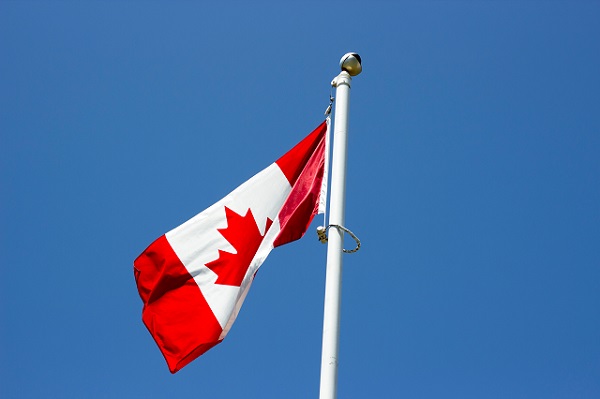
 Business2 days ago
Business2 days agoHigher Capital Gains Taxes cap off a loser federal budget
-
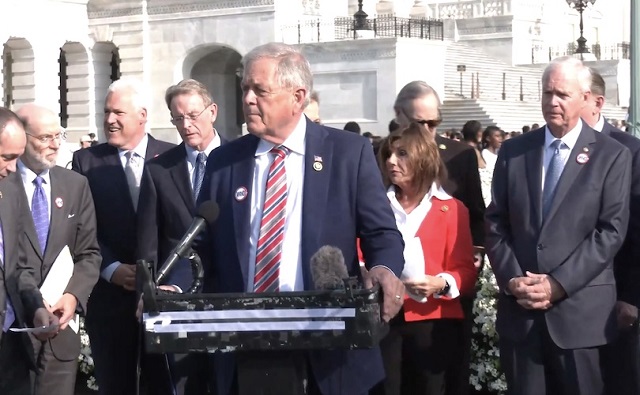
 CBDC Central Bank Digital Currency2 days ago
CBDC Central Bank Digital Currency2 days agoLawmakers, conservatives blast WHO plan for ‘global governance’ on future pandemics
-

 COVID-191 day ago
COVID-191 day agoJapanese study finds ‘significant increases’ in cancer deaths after third mRNA COVID doses
-

 Brownstone Institute1 day ago
Brownstone Institute1 day agoPfizer Lied to Us Again
-

 Brownstone Institute1 day ago
Brownstone Institute1 day agoDid Lockdowns Set a Global Revolt in Motion?
-
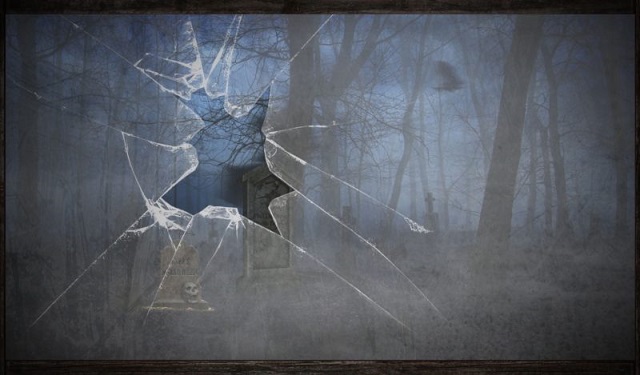
 Brownstone Institute21 hours ago
Brownstone Institute21 hours agoIs the Overton Window Real, Imagined, or Constructed?
-

 Frontier Centre for Public Policy12 hours ago
Frontier Centre for Public Policy12 hours agoThe tale of two teachers


